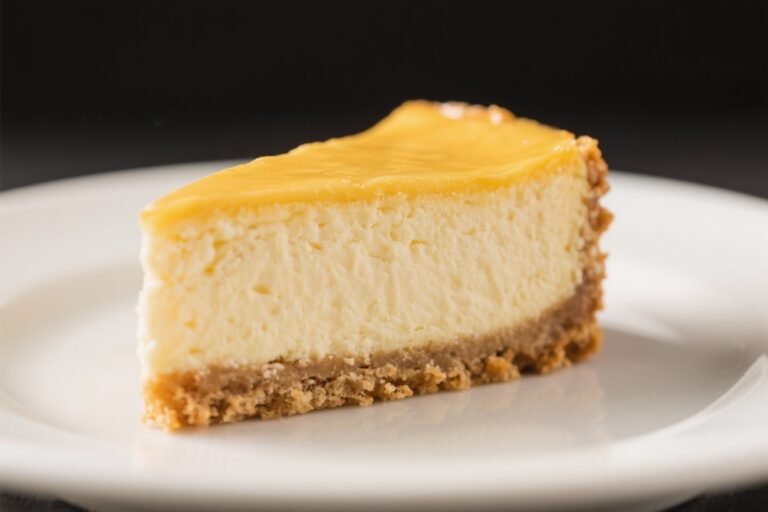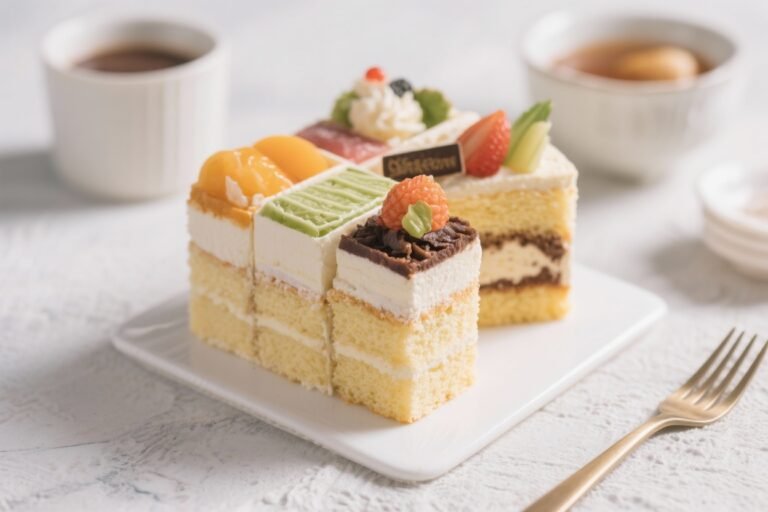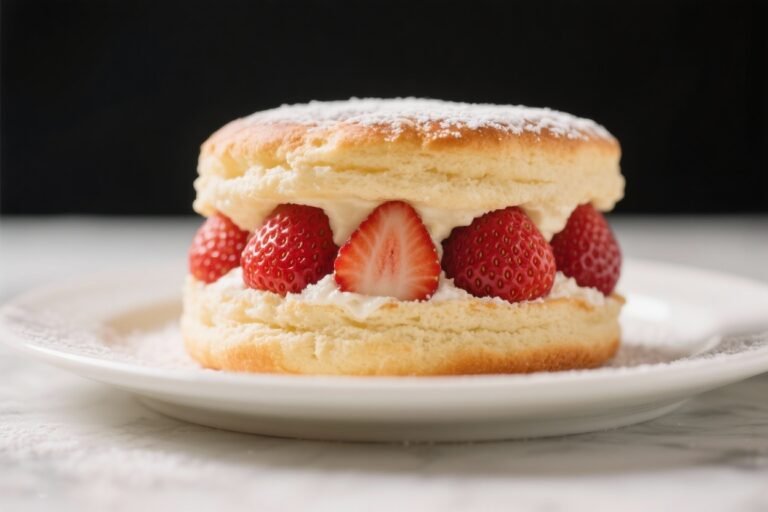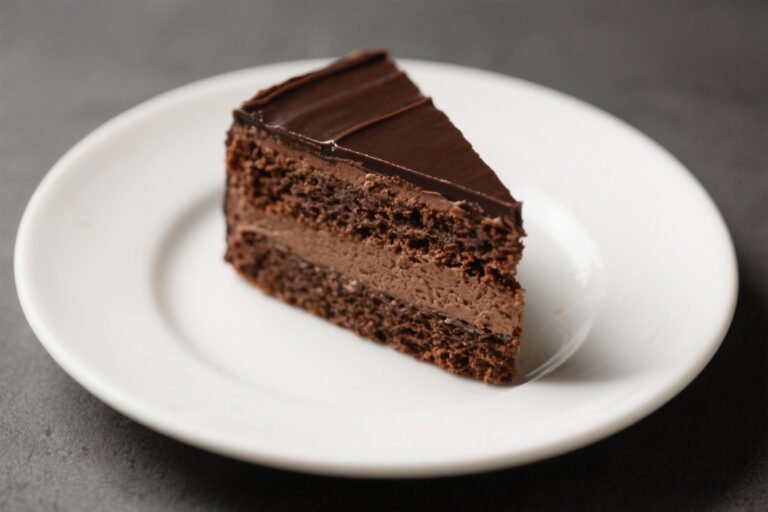Fluffy Pancakes That Slap: Your Weekend Breakfast Glow-Up
You can buy pancake mix, sure. But you can also spend 12 minutes making the fluffiest pancakes of your life and feel like a breakfast billionaire. These are golden on the outside, cloud-soft inside, and they don’t taste like cardboard.
No mystery powder, no drama—just a few pantry staples used with intention. Ready to stack, syrup, and flex? Let’s go.
Why This Recipe Works
This recipe balances moisture and lift with the right ratio of flour, fat, and leavener.
The buttermilk adds acidity, which reacts with baking soda for extra rise and a tender crumb. A little melted butter enriches the batter without making it dense.
We mix the wet and dry separately, then combine gently. That means fewer gluten bonds and fewer tough pancakes.
Resting the batter (briefly!) lets the flour hydrate and the bubbles stabilize, so your pancakes puff like they’re on a mission.
What Goes Into This Recipe – Ingredients
- 1 1/2 cups (180 g) all-purpose flour
- 2 tablespoons granulated sugar
- 1 1/2 teaspoons baking powder
- 1/2 teaspoon baking soda
- 1/2 teaspoon fine salt
- 1 cup (240 ml) buttermilk (or milk + acid substitute; see Variations)
- 1/2 cup (120 ml) milk (whole or 2%)
- 1 large egg
- 3 tablespoons unsalted butter, melted and cooled (plus more for the pan)
- 1 teaspoon vanilla extract (optional but excellent)
- Neutral oil or additional butter for cooking
How to Make It – Instructions
- Preheat your skillet or griddle. Set over medium heat. You want it hot enough that a drop of water skitters around, not vaporizes instantly.
- Mix the dry. In a large bowl, whisk flour, sugar, baking powder, baking soda, and salt until evenly combined.
- Mix the wet. In a separate bowl, whisk buttermilk, milk, egg, melted butter, and vanilla until smooth.
- Combine gently. Pour the wet into the dry. Stir with a spatula until just combined.
A few lumps are fine. Do not overmix or the pancakes will sulk.
- Rest the batter. Let it sit 5–8 minutes. The batter should thicken slightly as bubbles form.
- Grease and test. Lightly butter or oil the pan.
Spoon a tablespoon of batter to test heat—if it browns in about 1 minute, you’re good.
- Cook the pancakes. Pour 1/4 cup batter per pancake. Cook until edges look set and bubbles form and pop on top, about 2–3 minutes.
- Flip once. Turn gently and cook 1–2 minutes more until golden and cooked through. Adjust heat as needed to prevent scorching.
- Hold warm. Transfer to a 200°F (95°C) oven on a wire rack if making a big batch.
Don’t stack immediately—they steam and lose crisp edges.
- Serve like you mean it. Butter, warm maple syrup, berries, or a dollop of yogurt. You earned this.
Storage Tips
- Fridge: Cool completely. Store in an airtight container up to 3 days.
- Freezer: Layer with parchment in a freezer bag up to 2 months.
Press out air for best texture.
- Reheat: Toaster or 350°F (175°C) oven for 6–8 minutes. Microwave works in a pinch, but you’ll lose crisp edges—FYI.
- Make-ahead batter: Mix dry and wet separately the night before; combine in the morning. If fully mixed ahead, expect slightly less rise.
What’s Great About This
- Ridiculously fluffy. Buttermilk and the double lift from baking powder and soda deliver height without heaviness.
- Pantry-friendly. Everything’s easy to find, and there’s a swap for buttermilk below.
- Beginner-proof. Simple steps, clear cues.
If you can stir, you can win breakfast.
- Flexible. Works with chocolate chips, blueberries, bananas, or your wildest Saturday morning ideas.
Common Mistakes to Avoid
- Overmixing the batter. Smooth batter equals tough pancakes. Lumps are fine; streaks of dry flour are not.
- Using a blazing-hot pan. You’ll burn the outside and leave the center raw. Medium heat is your friend.
- Flipping too early or too often. Wait for bubbles to pop and edges to set.
Flip once—these aren’t burgers.
- Skipping the rest. A few minutes of resting gives taller, more even pancakes. Patience pays.
- Cold wet ingredients. Ice-cold milk can seize the melted butter into tiny fat shards. Let ingredients come toward room temp for a smoother mix.
- Stacking hot. Steam kills crispness.
Give them a minute on a rack before that photo-worthy stack.
Variations You Can Try
- No Buttermilk? Use 1 1/2 cups milk with 1 tablespoon lemon juice or white vinegar. Stir and rest 5 minutes. Or use half yogurt, half milk for a tangy upgrade.
- Blueberry Blast. Scatter fresh blueberries onto the batter after pouring in the pan.
Prevent bleed by tossing berries in a teaspoon of flour first.
- Chocolate Chip Dream. Add 1/2 cup mini chips to the batter. A pinch of cinnamon makes it taste “grown-up,” IMO.
- Banana Bread Pancakes. Mash 1 ripe banana into the wet ingredients. Add 1/2 teaspoon cinnamon and a dash of nutmeg.
Cook slightly lower and slower.
- Protein Boost. Replace 1/4 cup flour with vanilla protein powder and add 1–2 tablespoons extra milk to maintain consistency.
- Whole-Wheat Swap. Use 50% whole-wheat flour for heartier flavor. Increase milk by 2–3 tablespoons if the batter feels thick.
- Lemon Poppy Seed. Add 1 tablespoon poppy seeds and the zest of 1 lemon. Serve with a quick lemony yogurt drizzle.
- Gluten-Free. Use a cup-for-cup GF blend with xanthan gum.
Let batter rest 10 minutes—GF flours hydrate slower.
FAQ
How do I know when to flip the pancakes?
Look for bubbles forming on the surface that start to pop, and edges that look set and matte, not shiny. Slide a spatula under—if it lifts cleanly and the bottom is golden, flip.
Why are my pancakes tough?
Overmixing is the usual culprit. Stir just until the dry ingredients disappear, then stop.
Also avoid high heat, which can cook the exterior too fast and force you to overcook the interior.
Can I make the batter ahead of time?
You can mix it fully and chill for up to 12 hours, but expect slightly less rise as the leaveners lose power. Better approach: keep wet and dry separate, combine right before cooking.
What’s the best pan to use?
A heavy nonstick skillet or cast-iron griddle holds heat evenly. Preheat well and keep the heat at medium to medium-low for consistent browning.
How do I keep pancakes warm without getting soggy?
Place them in a 200°F (95°C) oven on a wire rack set over a sheet pan.
Air circulation prevents steam from softening the edges.
Can I reduce the sugar?
Yes—drop to 1 tablespoon or even skip it. Sugar adds mild sweetness and aids browning, but syrup or fruit will cover you.
Why add both baking powder and baking soda?
Baking powder gives steady lift during cooking. Baking soda reacts with the acidity in buttermilk for extra rise and tenderness.
Together they create that signature fluff.
Do I need to grease the pan if it’s nonstick?
A light film of butter or oil helps browning and flavor. Wipe between batches if the butter solids start to burn.
How thick should the batter be?
It should flow off a spoon in a slow ribbon, not a thin stream. If it’s too thick, add a tablespoon or two of milk.
Too thin? Stir in a tablespoon of flour.
Can I make these dairy-free?
Use a rich plant milk (oat or soy) and 1 tablespoon acid (lemon juice or vinegar) to mimic buttermilk. Swap butter for neutral oil or melted vegan butter.
The Bottom Line
Great pancakes aren’t magic; they’re method.
With balanced ingredients, gentle mixing, and the right heat, you’ll get tall, tender stacks that taste like a weekend victory. Keep it simple, keep it hot, and don’t overthink it. Next time someone suggests boxed mix, just smile—and pass the syrup.
Printable Recipe Card
Want just the essential recipe details without scrolling through the article? Get our printable recipe card with just the ingredients and instructions.
Printable Recipe Card
Want just the essential recipe details without scrolling through the article? Get our printable recipe card with just the ingredients and instructions.




